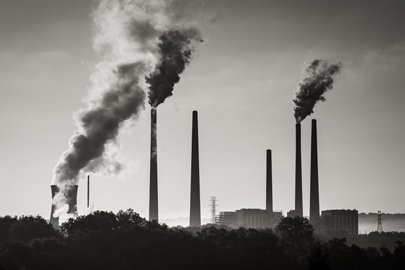Photo courtesy of Robert S. Donovan via Stanford News
By Sarah Grinnell ’26
Science and Environment Editor
As wildfires blaze, droughts intensify and global temperatures continue to break records month after month, fossil fuels remain the number one cause of carbon emissions, according to environmental law organization Earthjustice. But at what price?
According to a new study published in the journal Nature, by mid-century, failure to prevent irreversible climate change and the rise of global temperatures could have disastrous results. If temperatures rise above the 2 degrees Celsius limit set by the Intergovernmental Panel on Climate Change, it could cause an estimated $38 trillion in natural disaster damage and agricultural losses, resulting in an overall 19% drop in global income.
The study concludes that it may cost more to do nothing to stop climate change than to implement sustainable infrastructure to prevent it, CNN reported.
According to The Guardian, these numbers are twice as high as any previous analysis. The study accounted for rainfall and extreme weather impacts across 40 years of data taken from 1,600 local regions rather than solely analyzing rising temperatures at the national level.
The second half of this century will be the critical period for preventing these costs. If emissions continue at the current rate, the study predicted the average income losses would rise to more than 60% by 2100, the Guardian reported. However, if emissions can be reduced to net zero by 2050, that number would only be about 20%.
In an interview with Mount Holyoke News, Associate Professor of Economics Ted Gilliland, who specializes in natural resources economics, emphasized the complex economic nuances involved in this work that a surface-level examination of the study might overlook.
“As far as a business is concerned, if you’re in a competitive market, you face competitive forces,” Gilliland said. “So you may want to be more sustainable and choose something that would reduce, let’s say, carbon emissions. But it might cost you a little bit more. But if you do that, and your competitor doesn’t, then you risk going out of business.”
Gilliland offered another proposal. “At a societal level, if we invest in [sustainable infrastructure], I think it will probably have positive returns in the long-run in terms of a net benefit,” he said. “Potentially the future economy could be better off as a result of not pumping the atmosphere full of carbon dioxide and destabilizing our climate system.”
Either way, Gilliland stressed that definitive numbers are “pretty hard to nail down.”
“It’s hard to know what humans will do exactly in response to the long-term changes, and that just makes it harder to figure out what the costs are going to be,” he explained, expressing that further analysis of the study’s methodology would be needed to definitively say what the costs will be.
“I don’t think that’s a reason for inaction,” Gilliland said. “I think there’s a need for much more action, but I also am cognizant of how tricky it is to know the exact costs.”
According to Gilliland, “there’s going to be some large costs associated with this, and there’s almost certainly going to be inequitable costs with lower-income countries that didn’t emit the carbon in the first place.”
The Associated Press reported that, based on the study’s projections, the consequences of climate inaction will disproportionately shock the economies of lower-income countries that are least responsible for climate change. In the United States and Germany, for example, the projected median income loss will total around 11%, whereas in Africa and South Asia it will hit closer to 22%, the Guardian reported.
“Rich countries with lots of technology are going to be better able to adapt,” Gilliland said, expanding on this disparity. “If you don’t have money and resources, the ability to adapt to changing temperatures and changing weather patterns . . . is likely going to be lower [than] if you just don’t have the money and the resources and the government institutions.”
For an issue such as climate change that will inevitably impact many sectors of the economy, according to Gilliland, the best thing a Mount Holyoke College student can do is “take a class in economics to try to understand these issues.” While the accuracy of the numbers from the Nature study remains to be seen, the study illuminates that “it’s not possible to understand this without economics,” Gilliland said.

